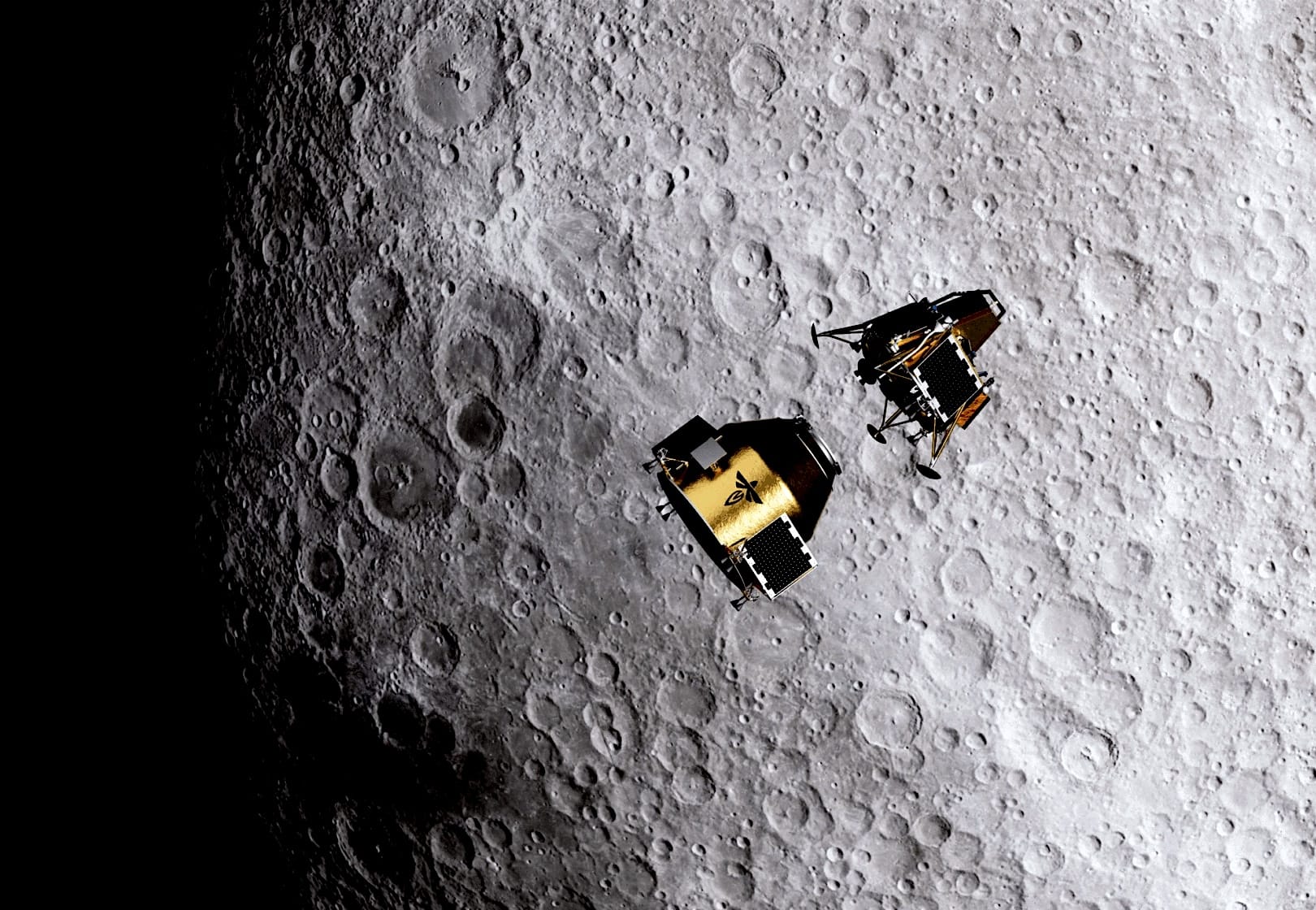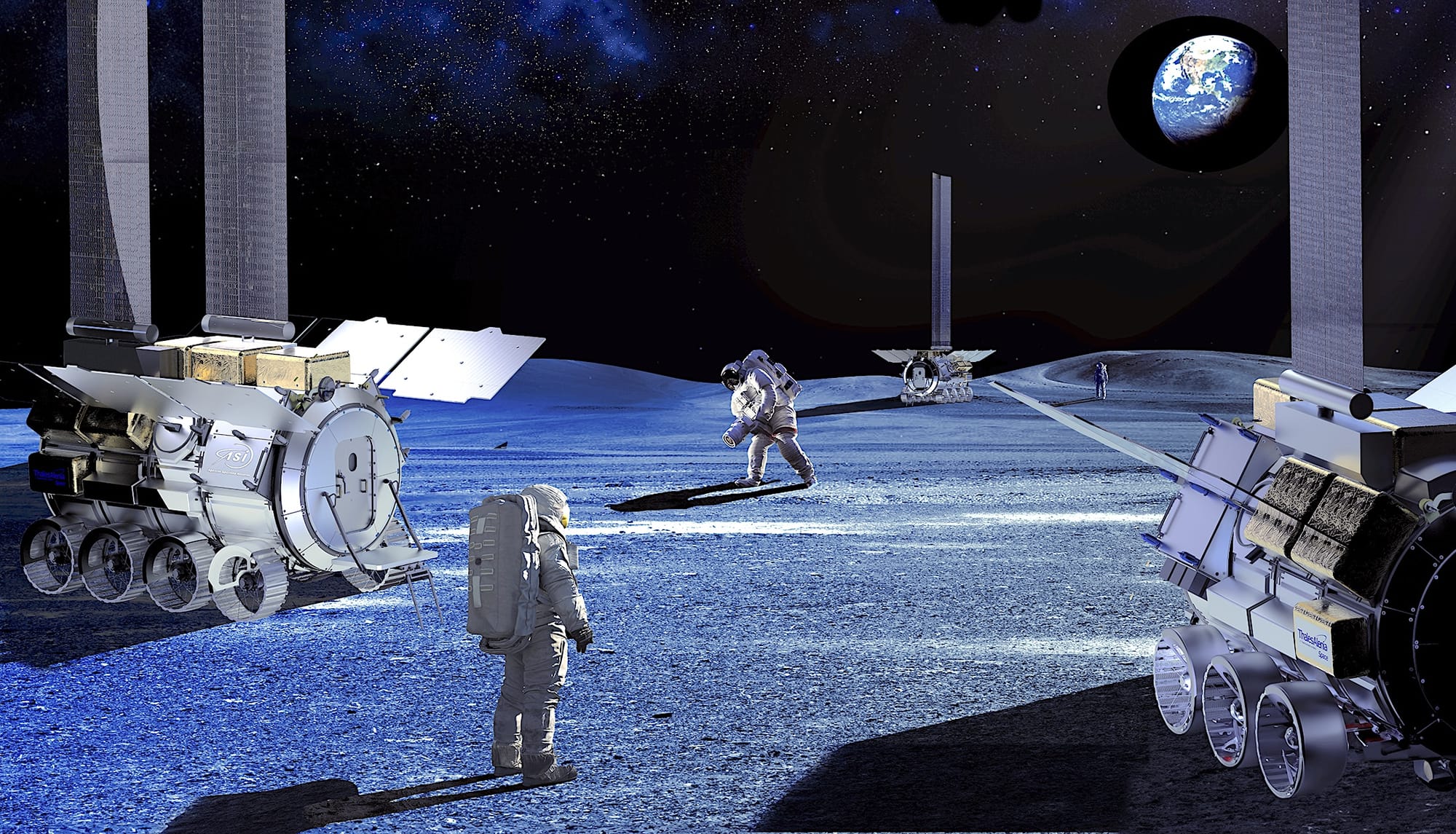Moon Monday #236: A third orbiter-lander-rover trio to fire-and-fly
I’m thrilled to welcome Astrolab as a continuing yearly sponsor of my Moon Monday blog+newsletter!

California-based Venturi Astrolab Inc. (Astrolab) is developing the large multi-purpose rovers of FLEX and FLIP for advanced exploration of our Moon this decade and next. Through FLEX, Astrolab leads one of the three teams NASA selected last year to mature their designs for a versatile Lunar Terrain Vehicle (LTV), which the agency hopes to use with and without crew across Artemis missions starting end of decade. 🌗
Note: All sponsorships abide by my public Editorial Independence Policy with zero exceptions.
A fourth Firefly

US-based Firefly Aerospace won its fourth Moon landing mission contract as part of NASA’s CLPS program. For $176.7 million, the company’s lander is to deliver three NASA-funded instruments to the Moon’s south pole in 2029 as well as two rovers: a versatile CubeRover from Astrobotic called Moonranger and Canada’s first lunar rover through CSA. The Canadian rover has an interesting profile:
The CSA Rover is designed to access and explore remote South Pole areas of interest, including permanently shadowed regions, and to survive at least one lunar night. The CSA rover has stereo cameras, a neutron spectrometer, two imagers (visible to near-infrared), a radiation micro-dosimeter, and a NASA-contributed thermal imaging radiometer developed by the Applied Physics Laboratory. These instruments will advance our understanding of the physical and chemical properties of the lunar surface, the geological history of the Moon, and potential resources such as water ice. It will also improve our understanding of the environmental challenges that await future astronauts and their life support systems.
The rover was originally intended to be launched on a CLPS lander in 2026 as part of a NASA-CSA deal, and it’s only now that we’ve learnt about its launch target being pushed to 2029. Coming back to the CLPS mission itself, Firefly says the mission’s orbiter element, Elytra Dark, will provide communications relay services for the lander. After the short surface mission is over, Elytra Dark will join its other two twin craft (assumed to be operational by then from prior missions) to offer commercial lunar imaging and mapping services.

Building on the success of its first Moon landing, Firefly is gearing up for its second, third, and now fourth Moon landing attempt this decade. While the company’s first lander did not carry a rover, all the next three are. The second Firefly lander will carry UAE’s Rashid 2 rover to the Moon’s farside whereas the third lander will deploy Honeybee Robotics’ first planetary rover on one of the two Gruithuisen Domes, a unique volcanic site on the Moon’s nearside.
More mission updates
- After Intuitive Machines faced a second unsuccessful CLPS landing with IM-2 this year, the lunar lander builder is diversifying its offerings with orbital lunar communications and cislunar deployment services, the latter being based on orbital vehicles derived from flown lander systems.
- CSA awarded initial study contracts totaling $10.6 million to three companies—Canadensys, MDA Space, and Mission Control—towards developing a “Lunar Utility Vehicle” (LUV). This follows Canada’s intent from 2023 to invest $1.2 billion over 13 years to develop an assistance rover for future Artemis astronauts. Canada hopes that just like how contributing their Canadarm3 robotics servicing system to the upcoming NASA-led Gateway lunar orbital habitat bagged seats for their astronauts on circumlunar Artemis missions, contributing a large, durable LUV rover for Artemis surface missions will enable a Canadian to walk on the Moon. There are three other rovers in this largest size category being planned to explore the Moon: the Artemis Lunar Terrain Vehicle, JAXA’s advanced pressurized rover, and China’s crewed rover.
- The Italian Space Agency (ASI) has awarded a preliminary design contract to a group led by Thales Alenia Space for a Multi-Purpose Habitat (MPH) astronaut module central to NASA’s planned Artemis Basecamp on the Moon. This follows last year’s milestone when a NASA review board approved the module’s development to commence. To be launched and placed on the Moon sometime in the 2030s, the MPH module can host two astronauts for up to 30 days nominally while a larger crew can stay for short periods during emergencies. The 15,000-kilogram module will have wheels so it can reposition itself as needed on the dynamically lit lunar polar surface. The flight model can be constructed only later once the development phase is complete.

More Moon
- A new document collated by US DARPA provides more details on the lunar infrastructure concepts by multiple companies which the former organization selected in 2023 for advanced studies. These are part of a 10-year Lunar Architecture (LunA-10) on how to build key commercial infrastructure pieces for sustaining human presence on the Moon.
- Eric Jones, the lead creator of the meticulous Apollo Lunar Surface Journal, passed away last month.
Many thanks to Astrolab and Ajay Kothari for sponsoring this week’s Moon Monday! If you too appreciate my efforts to bring you this curated community resource on global lunar exploration for free, and without ads, kindly support my independent writing:
